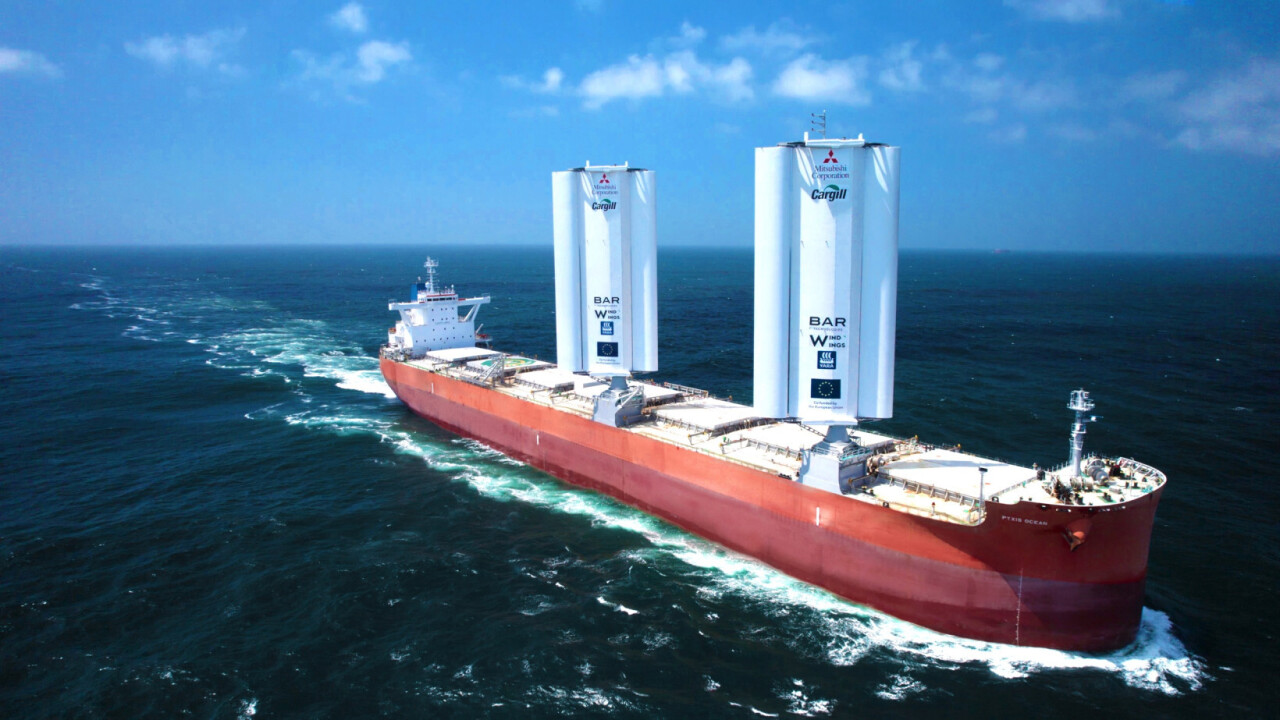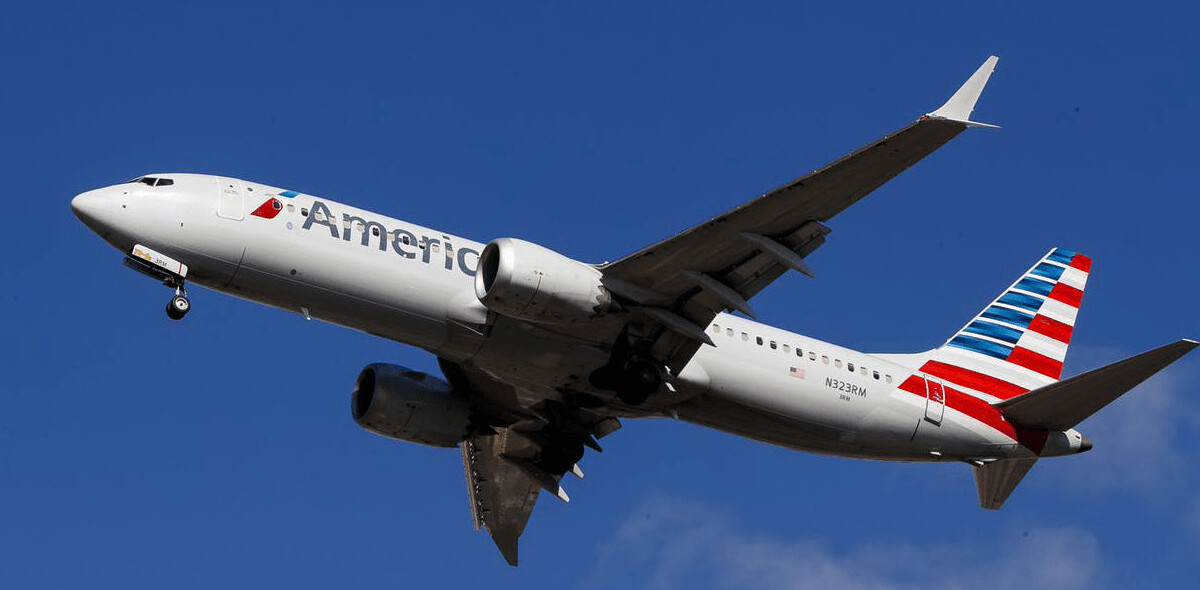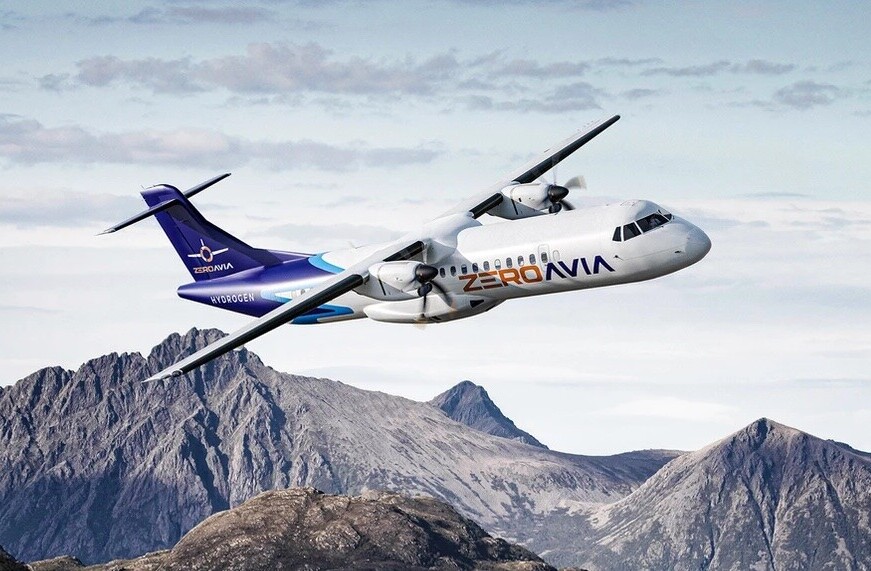
A cargo ship retrofitted with two huge sails has set out on its maiden voyage, potentially chartering a greener course for the global shipping industry.
The ship Pyxis Ocean will test the so-called “WindWings” as it travels across the globe from China to Brazil. American firm Cargill, which is chartering the vessel, said this is the first time sails of this size have been fitted to a cargo ship and tested in the real world.
The rigid, foldable sails were designed by British company BAR Technologies, a spin-off from the 2017 UK team of America’s Cup, a world-famous sailing competition often dubbed the ‘Formula One of the Seas’.
Each sail is 37.5 metres tall and mainly made from fibreglass, the same material as wind turbine blades. And like wind turbines, they are also designed to slash carbon emissions. By assisting a cargo ship’s engines, the WindWings could cut diesel fuel consumption by up to 30%.
“Get four wings on a vessel, that’s six tonnes of fuel saved, that’s 20 tonnes of CO2 saved – per day. The numbers are massive,” John Cooper, BAR’s CEO, told the BBC.
Globally, shipping accounts for 3% of greenhouse gas emissions – more than the entire aviation industry. But shipping is notoriously hard to decarbonise because most ships today are built to run on diesel fuel, and alternatives like hydrogen or batteries are not yet viable.
WindWings, which is co-funded by the EU’s Horizon programme, is a particularly attractive option because it enables shipping companies to retrofit their existing fleet and cut emissions right now.
“Ultimately we do need zero-carbon fuels on all ships, but in the meantime, it is imperative to make every journey as efficient as possible,” Dr Simon Bullock, shipping researcher at the University of Manchester also told the BBC.
Elsewhere, similar wind-based vessel projects are already underway. Earlier this year, Swedish company Oceanbird began construction on a set of 40-metre high, 200 metric-ton sails to be retrofitted on the 14-year-old car carrier, Wallenius Tirranna.
Norwegian cruise company Hurtigruten also revealed a concept design for its very first zero-emission ship in June. The ship will be battery-powered with energy supplemented from three 40-metre solar panel-covered sails. It is scheduled to depart in 2030.
In the meantime, during its estimated six-week journey, the Pyxis Ocean’s sails will be closely monitored in the hopes of scaling the technology across both the Cargill fleet, and the shipping industry at large.
Get the TNW newsletter
Get the most important tech news in your inbox each week.





